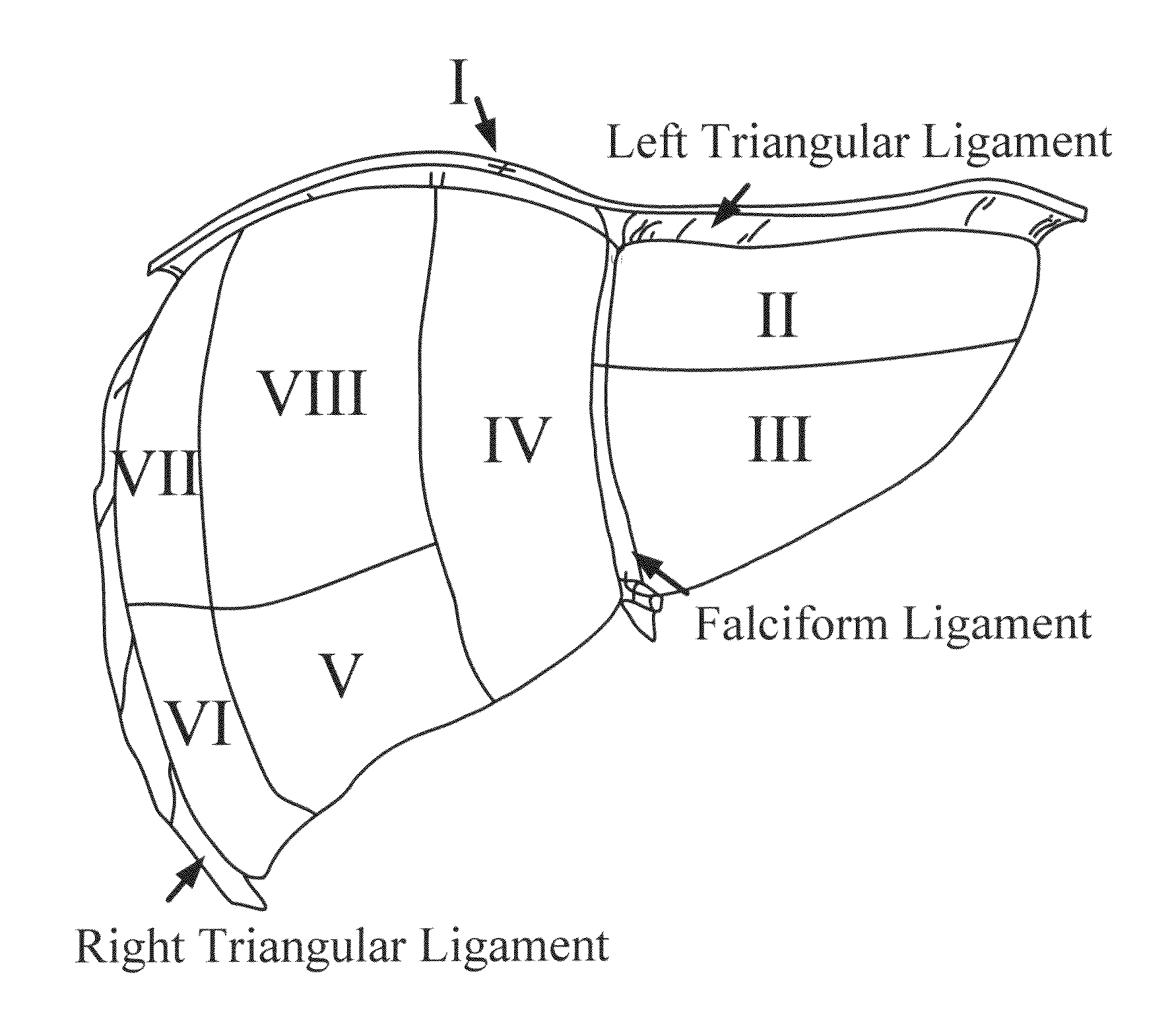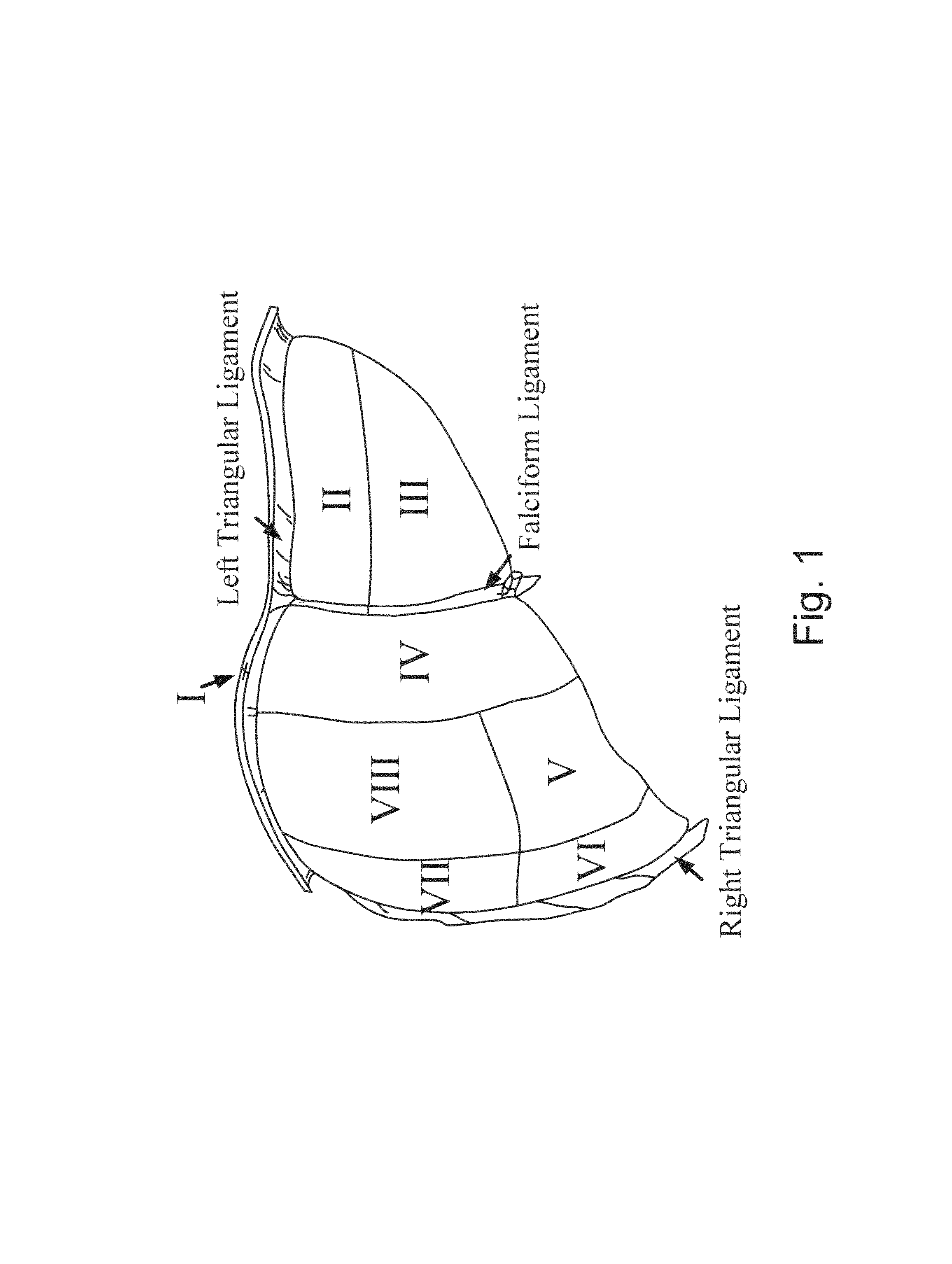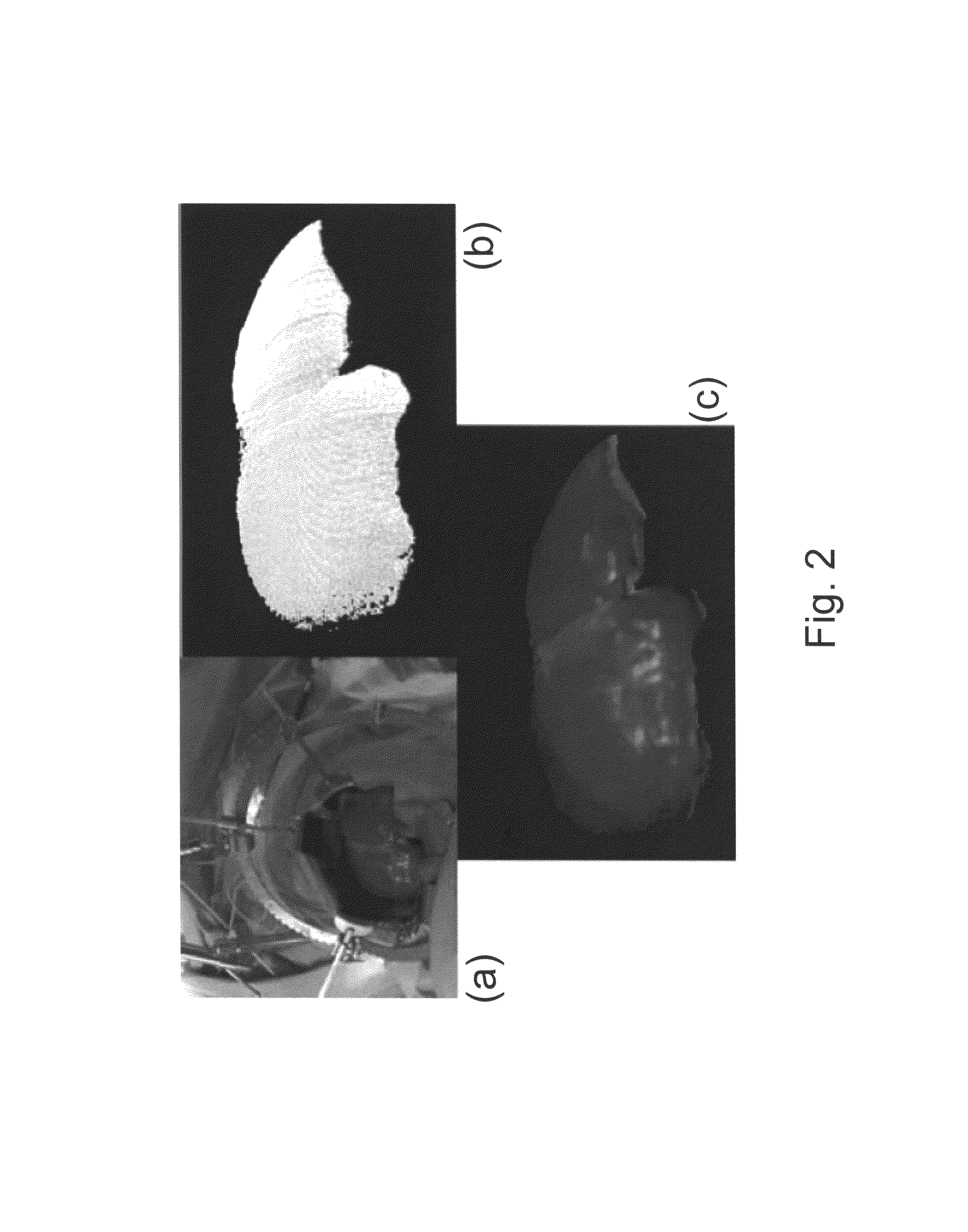Apparatus and methods of compensating for organ deformation, registration of internal structures to images, and applications of same
a technology of organ deformation and apparatus, applied in the field of apparatus and methods of compensating for organ deformation, can solve the problems of increasing the incidence of hepatic resection for colorectal cancer metastasis, uneconomical scaling to mid-level medical centers, and inability to meet the needs of patients,
- Summary
- Abstract
- Description
- Claims
- Application Information
AI Technical Summary
Benefits of technology
Problems solved by technology
Method used
Image
Examples
example 1
Compensation for Intraoperative Organ Shift
[0186]A. Image-Guided Liver Surgery System: The current image-guided liver surgery (IGLS) system is developed through collaborative efforts between researchers at Vanderbilt University, Washington University in St. Louis, and Pathfinder Therapeutics Inc. (PTI), and has been used to collect data in more than 15 clinical cases. This working prototype has been in development for over eight years. Preoperative CT and MR images are acquired from the liver of a patient one to two weeks before the procedure. The liver of the patient is segmented from these preoperatively acquired image volumes. This segmentation can be performed by manually outlining the contour of the liver surface. However, the manual procedure is often very slow and tedious and may require hours to complete. An alternative and more expedient semi-automatic method was developed by Dr. Benoit Dawant at Vanderbilt University which is based on the level-set technique [30, 31]. This...
example 2
Compensating for Intraoperative Soft-Tissue Deformations Using Incomplete Surface Data and Finite Elements
[0214]The IGLS requires the ability to identify and compensate for soft tissue deformation in the organ. The predeformed state is represented as a complete three-dimensional surface of the organ, while the intraoperative data is a range scan point cloud acquired from the exposed liver surface. The first step is to rigidly align the coordinate systems of the intraoperative and preoperative data. Most traditional rigid registration methods minimize an error metric over the entire data set. In this Example, a new deformation-identifying rigid registration (DIRR) is reported that identifies and aligns minimally deformed regions of the data using a modified closest point distance cost function. Once a rigid alignment has been established, deformation is accounted for using a linearly elastic finite element model (FEM) and implemented using an incremental framework to resolve geometri...
example 3
Robust Surface Registration Using Salient Anatomical Features—a Patch Approach
[0268]This example relates to how to implement a surface based registration method that utilizes the homologous, salient anatomical features to ensure convergence to reasonable solutions under conditions of poor initial alignment. Additionally, the robustness and feasibility of the implemented algorithm are demonstrated, relative to the traditional ICP based method, using both phantom and clinical data.
Method
[0269]A. Overview: The implemented weighted patch ICP algorithm in this embodiment is effectively a novel, non-obvious extension of the WGF algorithm proposed by Maurer et al. The homologous anatomical features, or patches, will be used to both bias point correspondence determination as well as play a more significant role in the PBR performed at each iteration of the algorithm. The weighting scheme used to bias the PBR is dynamic over the course of the algorithm where the homologous patch regions play...
PUM
 Login to View More
Login to View More Abstract
Description
Claims
Application Information
 Login to View More
Login to View More - R&D
- Intellectual Property
- Life Sciences
- Materials
- Tech Scout
- Unparalleled Data Quality
- Higher Quality Content
- 60% Fewer Hallucinations
Browse by: Latest US Patents, China's latest patents, Technical Efficacy Thesaurus, Application Domain, Technology Topic, Popular Technical Reports.
© 2025 PatSnap. All rights reserved.Legal|Privacy policy|Modern Slavery Act Transparency Statement|Sitemap|About US| Contact US: help@patsnap.com



